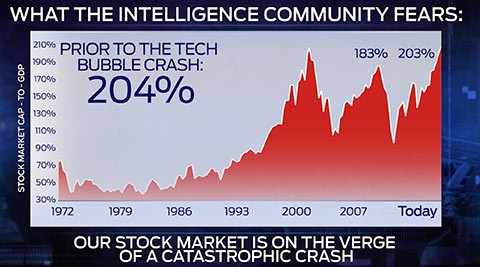The Secret About Market Timing I Wish Everyone Knew Money Morning We Make Investing Profitable
Post on: 17 Июнь, 2015 No Comment

display>
Keith Fitz-Gerald
Many investors are trying to time the markets, especially lately with concerns over low oil prices. global woes, and Chinese growth in the headlines.
I totally get where they’re coming from. The idea of picking market tops and bottoms is very seductive.
But they may as well try to catch falling knives
The most recent DALBAR data shows that the return of investors trying to time the markets is a pathetic 1.9% a year over the past 20 years. Worse, they would have to be right a staggering 82% of the time just to match buy and hold returns, according to Nobel Laureate William Sharpe.
Clearly market timing is one tactic that does not build Total Wealth. But here’s the secret.
You’re much better off trying to understand sentiment because that’s how you identify the best and the worst times to put your money to work and rack up the biggest gains.
Today I want to teach you how to do that
Sentiment Tells You Where Things Are Going
If you stop and think about it for a moment, tracking sentiment makes a lot of sense.
The financial markets are a construct that embodies the collective wants, desires, and aspirations of millions. As such, they reflect emotion. Therefore, if you understand what kind of mood they’re in, you can make the right moves ahead of time and gain the upper hand when it comes to building wealth.
One of the best ways to do that is via a technical tool called the Put/Call Ratio.

It’s the only tool I’ve seen in more than 30 years of analyzing markets that works consistently and accurately to predict every single one of the market’s major turning points.
The Put/Call Ratio measures sentiment by calculating the difference between thousands of put and call options traded in the United States stock markets.
Viewed as a proportion, the ratio can be calculated on any given stock, ETF, index, or other investable instrument for which there are options traded. So you can apply it to individual securities, too.
Generally speaking, higher readings reflect more calls being traded, which suggest traders anticipate higher prices ahead. Conversely, lower readings suggest that there are more puts being traded so lower prices are more likely.
The problem is that when you look at the data in isolation, it looks like either an EKG from hell or an earthquake tremor map.
To get around that, most traders smooth the data over a period of time using a moving average to get what’s called a normalized ratio that’s not so spikey as to be useless. Day traders with short attention spans seem to like 10 to 15 days. Position traders may push out to 200 days or more.
Here’s what I suggest you do:














